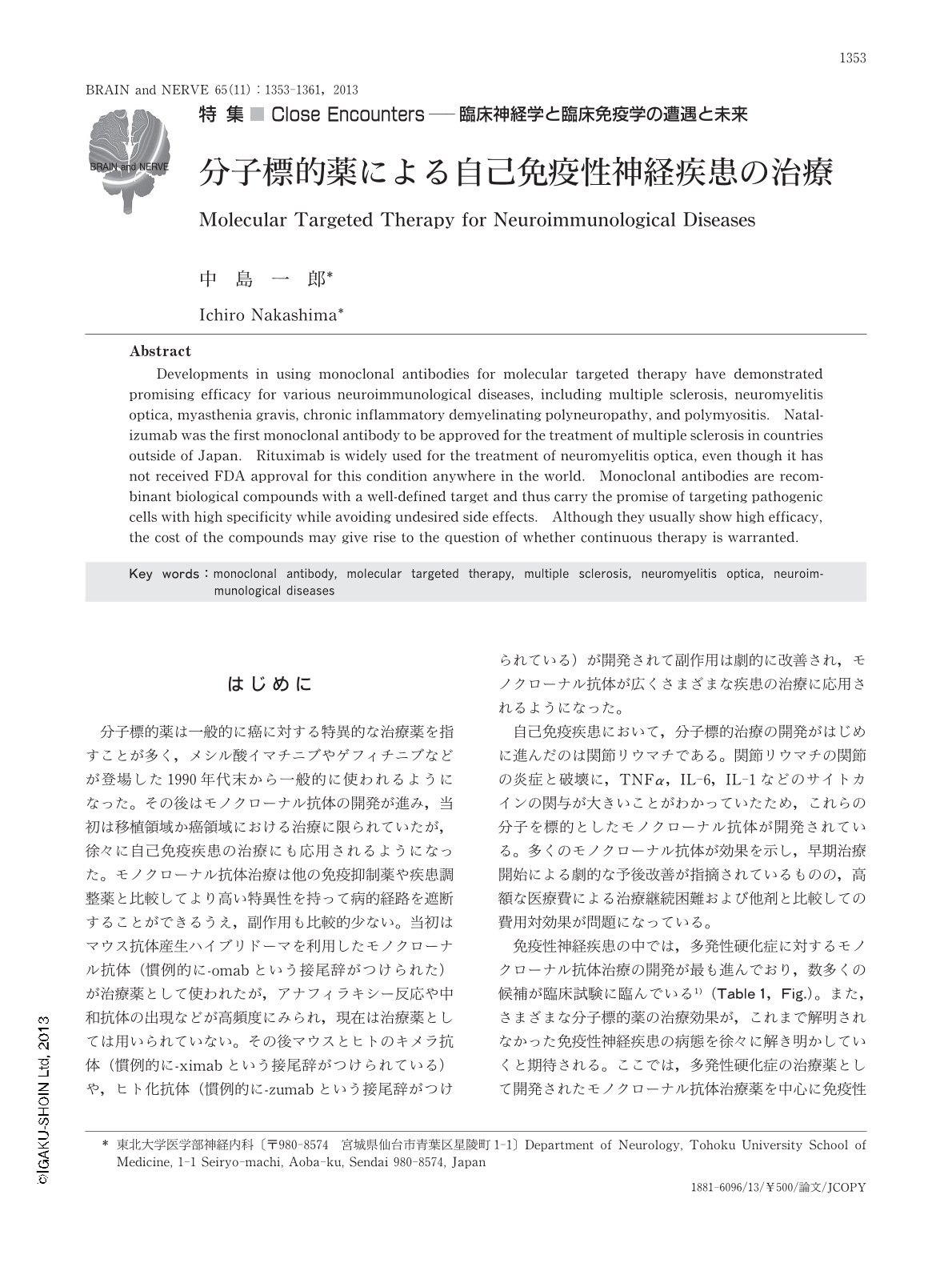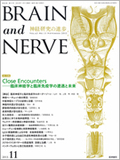Japanese
English
- 有料閲覧
- Abstract 文献概要
- 1ページ目 Look Inside
- 参考文献 Reference
- サイト内被引用 Cited by
はじめに
分子標的薬は一般的に癌に対する特異的な治療薬を指すことが多く,メシル酸イマチニブやゲフィチニブなどが登場した1990年代末から一般的に使われるようになった。その後はモノクローナル抗体の開発が進み,当初は移植領域か癌領域における治療に限られていたが,徐々に自己免疫疾患の治療にも応用されるようになった。モノクローナル抗体治療は他の免疫抑制薬や疾患調整薬と比較してより高い特異性を持って病的経路を遮断することができるうえ,副作用も比較的少ない。当初はマウス抗体産生ハイブリドーマを利用したモノクローナル抗体(慣例的に-omabという接尾辞がつけられた)が治療薬として使われたが,アナフィラキシー反応や中和抗体の出現などが高頻度にみられ,現在は治療薬としては用いられていない。その後マウスとヒトのキメラ抗体(慣例的に-ximabという接尾辞がつけられている)や,ヒト化抗体(慣例的に-zumabという接尾辞がつけられている)が開発されて副作用は劇的に改善され,モノクローナル抗体が広くさまざまな疾患の治療に応用されるようになった。
自己免疫疾患において,分子標的治療の開発がはじめに進んだのは関節リウマチである。関節リウマチの関節の炎症と破壊に,TNFα,IL-6,IL-1などのサイトカインの関与が大きいことがわかっていたため,これらの分子を標的としたモノクローナル抗体が開発されている。多くのモノクローナル抗体が効果を示し,早期治療開始による劇的な予後改善が指摘されているものの,高額な医療費による治療継続困難および他剤と比較しての費用対効果が問題になっている。
免疫性神経疾患の中では,多発性硬化症に対するモノクローナル抗体治療の開発が最も進んでおり,数多くの候補が臨床試験に臨んでいる1)(Table1,Fig.)。また,さまざまな分子標的薬の治療効果が,これまで解明されなかった免疫性神経疾患の病態を徐々に解き明かしていくと期待される。ここでは,多発性硬化症の治療薬として開発されたモノクローナル抗体治療薬を中心に免疫性神経疾患における分子標的治療開発の現状を解説する。
Abstract
Developments in using monoclonal antibodies for molecular targeted therapy have demonstrated promising efficacy for various neuroimmunological diseases, including multiple sclerosis, neuromyelitis optica, myasthenia gravis, chronic inflammatory demyelinating polyneuropathy, and polymyositis. Natalizumab was the first monoclonal antibody to be approved for the treatment of multiple sclerosis in countries outside of Japan. Rituximab is widely used for the treatment of neuromyelitis optica, even though it has not received FDA approval for this condition anywhere in the world. Monoclonal antibodies are recombinant biological compounds with a well-defined target and thus carry the promise of targeting pathogenic cells with high specificity while avoiding undesired side effects. Although they usually show high efficacy, the cost of the compounds may give rise to the question of whether continuous therapy is warranted.

Copyright © 2013, Igaku-Shoin Ltd. All rights reserved.


